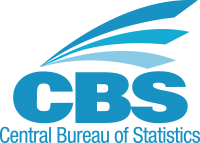Economy
Economic activities within a country involve numerous transactions among various sectors, including the government, financial and non-financial sectors, households, non-profit institutions, and the rest of the world. To comprehend this intricate economic landscape, having a robust system is crucial.
National Accounts offer a comprehensive view of the economic dynamics within a given year. This perspective is built upon the concepts and definitions outlined by the UN and IMF in the System of National Accounts 2008(SNA 2008), to the extent that data availability permits. The system comprises a coherent and adaptable framework of macroeconomic accounts, which serve as valuable tools for economic analysis (utilized by local organizations, institutions such as enterprises and universities, students, and international organizations like the UN, IMF, and World Bank) and policy formulation.
Within this framework, alongside data on Gross Domestic Product (GDP), you'll also find information on Gross National Income, Income per capita, Gross savings, and Gross National Disposable Income. All data presented in this section are estimates provided by CBS.
For historical data on the Economy theme, please visit our online digital library by clicking here CBS Home - National Accounts
